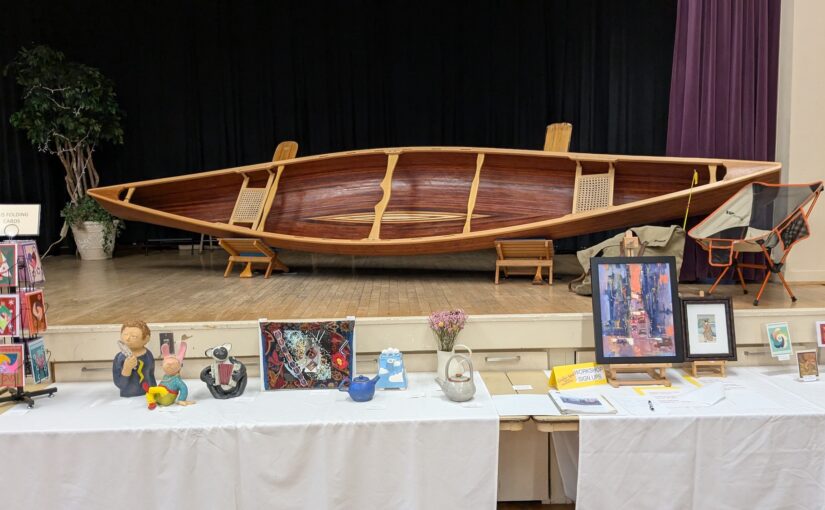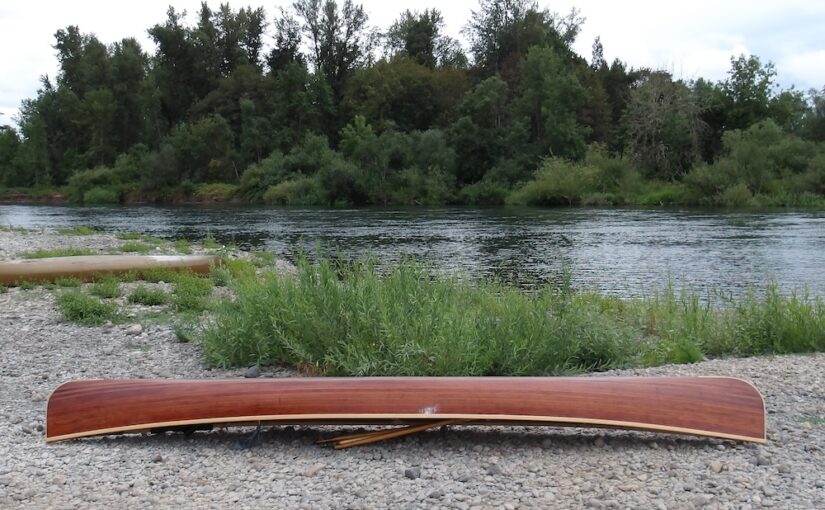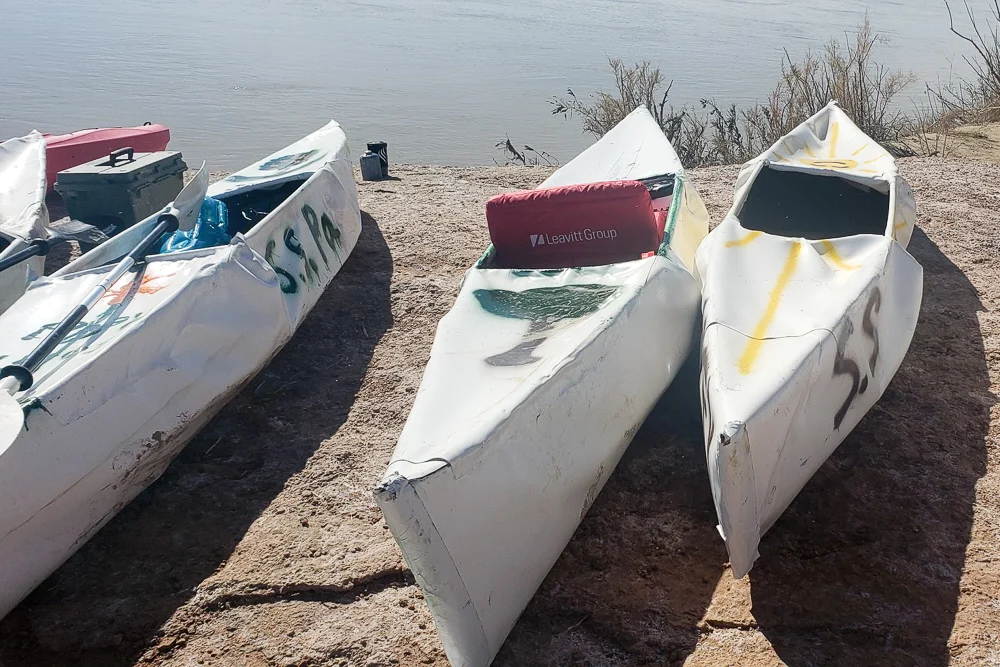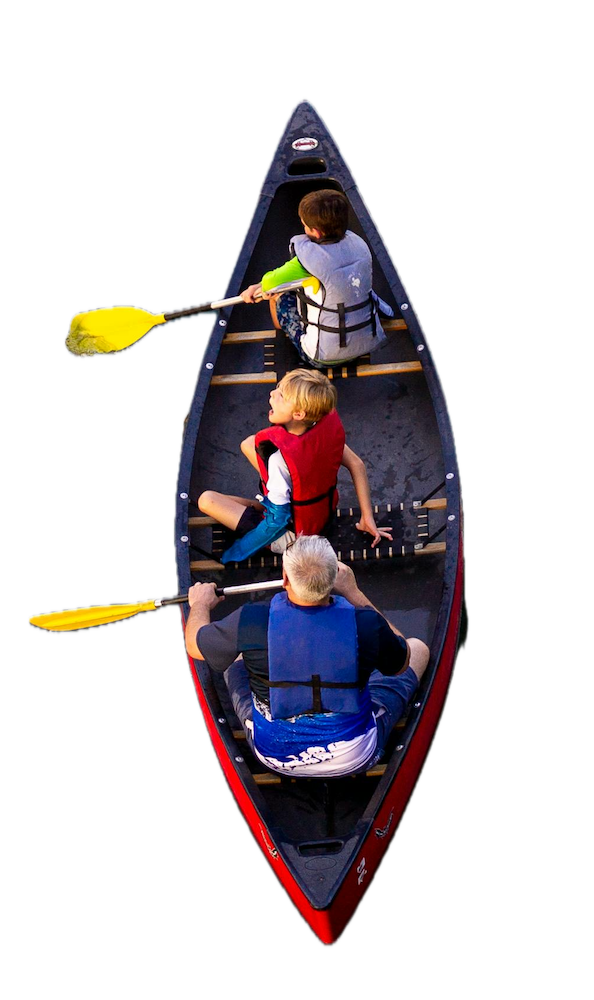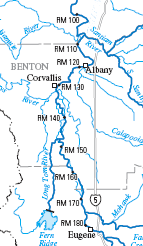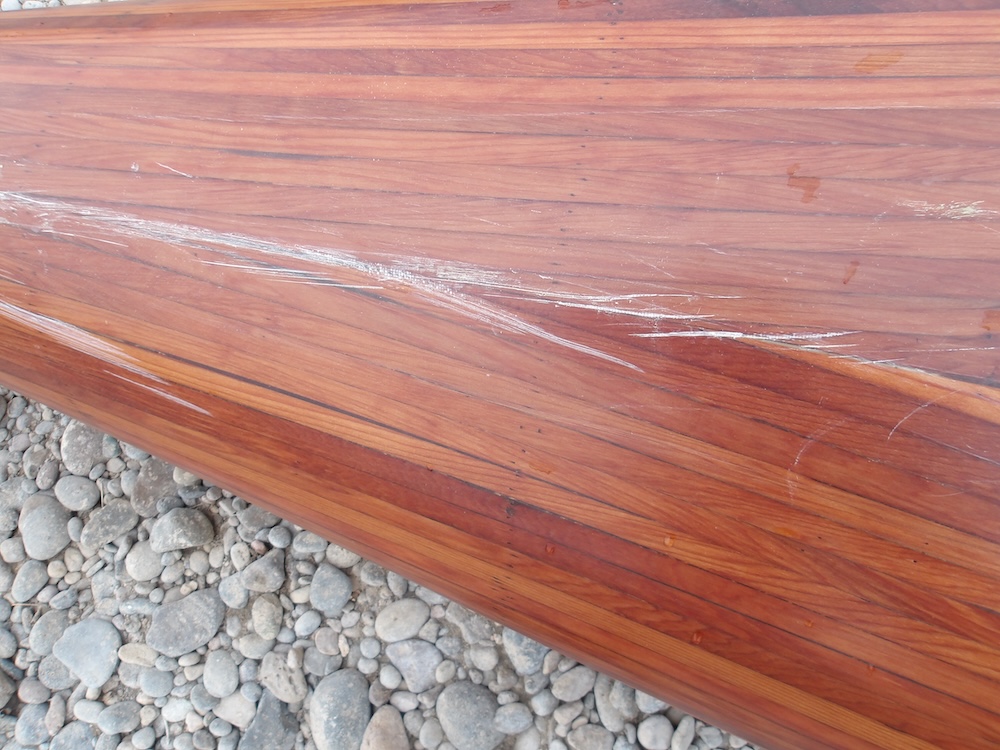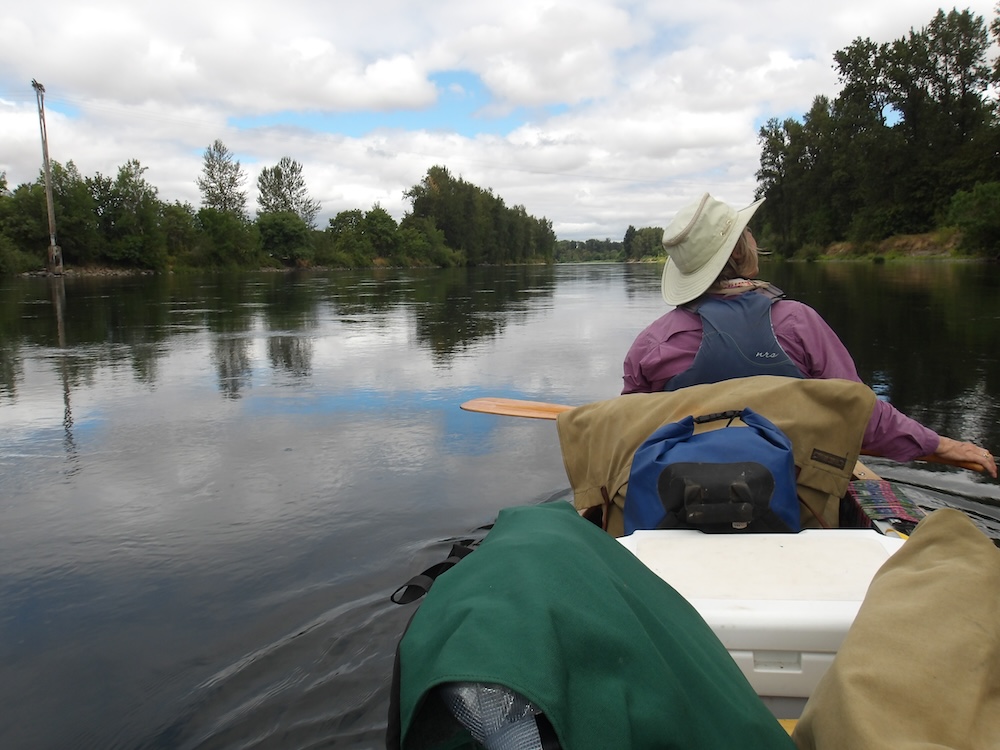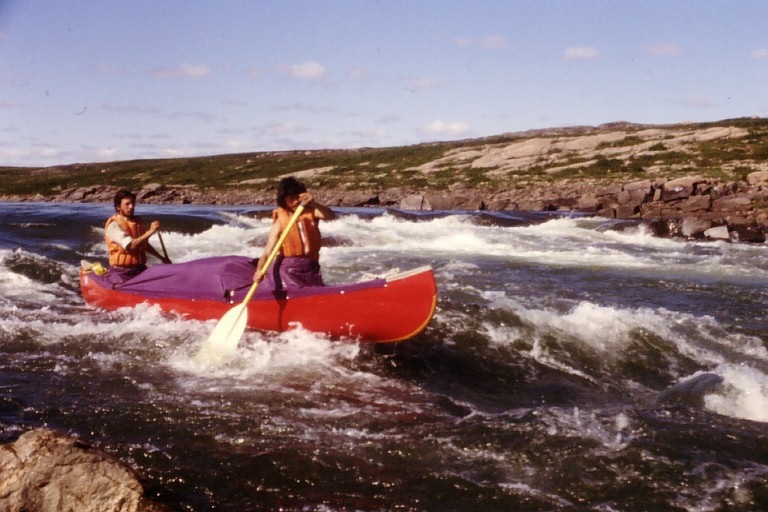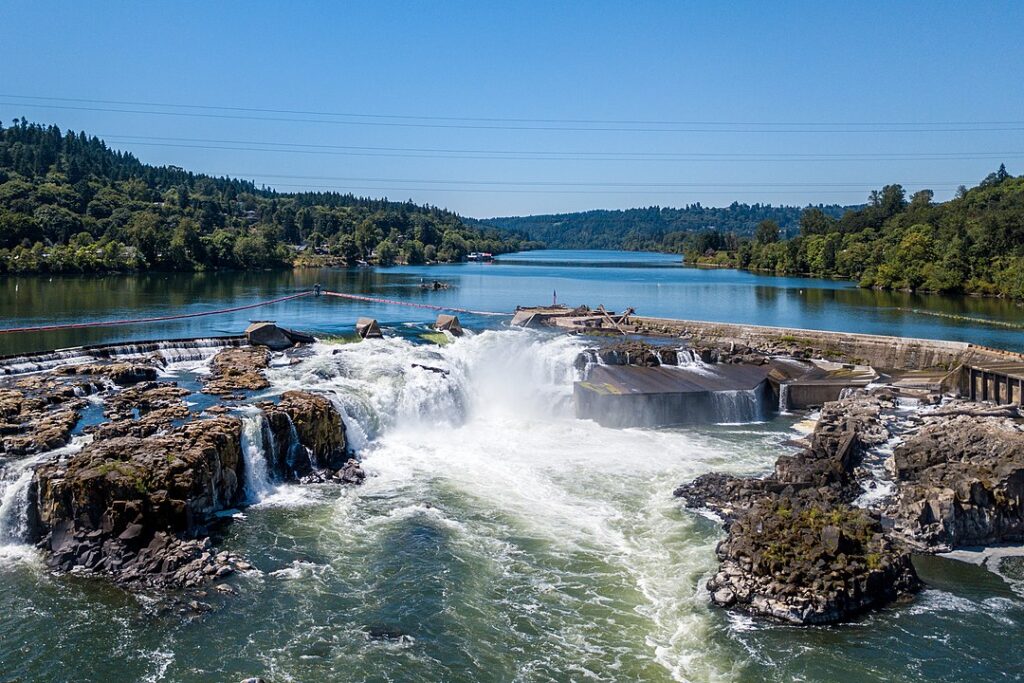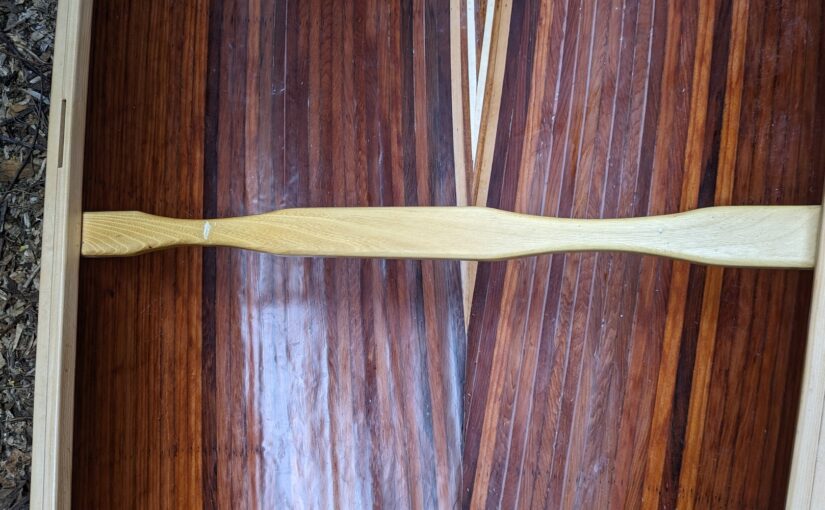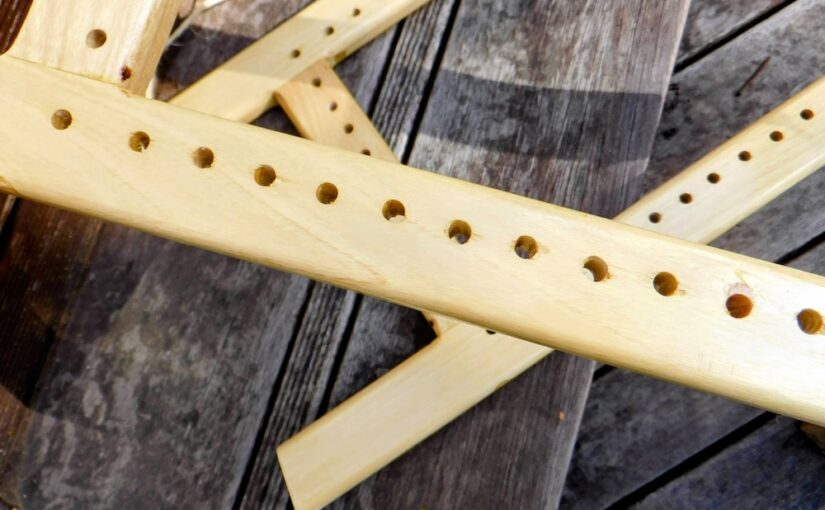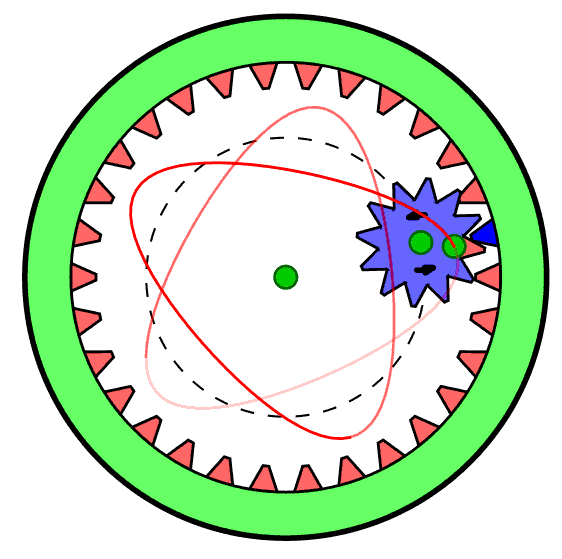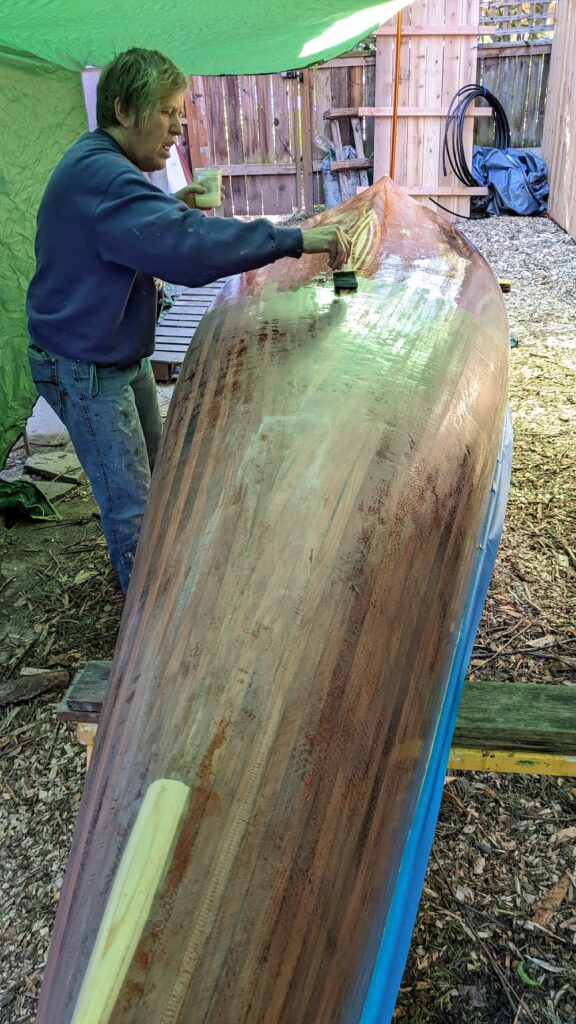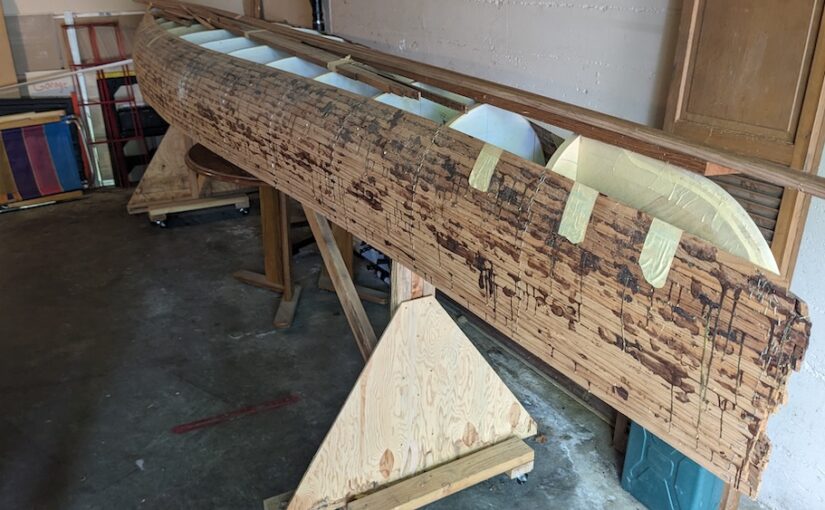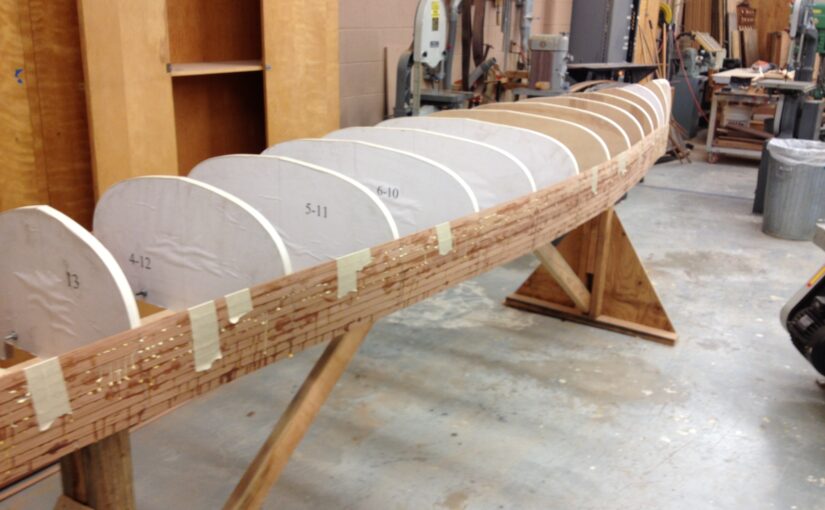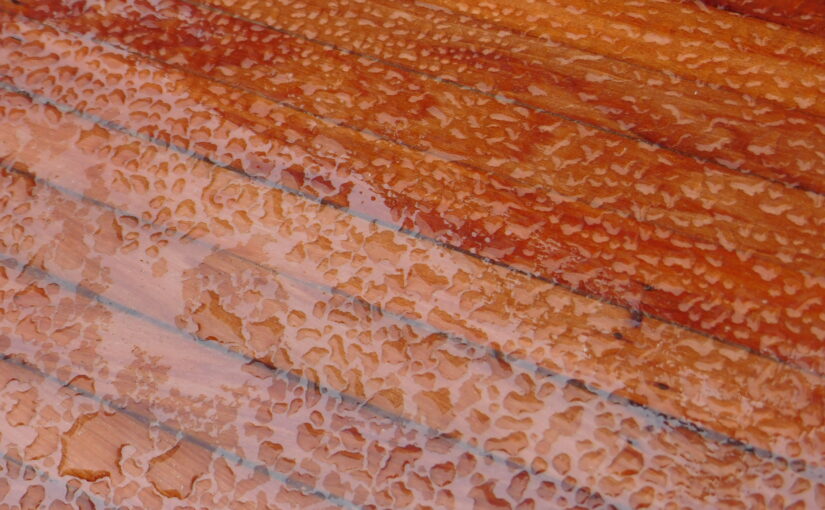Janell and I cherished the hundreds of steps adding up to the finished whole of our wood strip canoe. The result is a piece of finely crafted furniture like what you won’t find at Ikea. It is handsome to look at.
But…a canoe isn’t just for looks. A canoe moves through water. How a canoe moves results from its shape, and the shape of a canoe results from compromises. Short boats turn quickly. Long boats go fast. Some boats are tippy, some are stable. You can spend a lot of time designing a perfect boat, but you really don’t know what you’ve got until it’s built.
Here’s an example; There’s a distressing story about a Scout troop that built boats out of PVC pipe and tyvek. They assumed a canoe only has to look like a canoe for it to behave like a canoe. They launched on a multi-day, down-river camping trip.
Within three hours, rescue teams retrieved everyone on the trip, minus boats.
Boat design is hard. There are lots of ways to screw it up and produce a useless canoe. It can look great, but….
Proper Party Etiquette
I have more opinions about canoes than most people want to hear. Like other topics I don’t discuss at parties, the pros and cons of canoe performance are something I avoid in mixed company. If you can’t see the obvious problems in the photo to the right, we’re better off discussing the appetizers than river keels versus lake keels and why ABS is better than aluminum.
I have friends that discuss trucks. V8 vs V6, F150 vs F250, Ford vs Chevy vs GMC. I’m trying, really trying, to educate myself so I can take part in these bar discussions. But I lose focus then order more deep-fried cheese curds. I assume it’s the same problem people have with me when I pontificate about the Zen of paddling.
So forgive me for this self-indulgent posting. I’ll try to keep it interesting.
Four Days, Three Nights
As we built the canoe, we had clues about performance. This canoe was exceptional, but to really know we had to spend some time with it on the water.
Janell and I took the boat on a Willamette River trip from Eugene to Buena Vista. Seventy-five miles, four days, three nights. We carried three Duluth packs (equipment and two personals), a cooler (because we don’t have to portage), a camp kitchen (because it’s cool and we can), and a food pack with way too much food (because who wants to starve?)
Paddling Fast Water
Near Eugene, the Willamette is pushy and a rock garden with submerged trees providing ample opportunities to drown inner-tubers without lifejackets. It’s level two whitewater; a boring paddle for short play boats. A play boat with lots of rocker and no keel behaves like a Border Collie at a sheep herding competition, sponsored by the ADHD foundation and catered by Black Death coffee Brewers. Navigating a loaded seventeen-foot canoe requires planning ahead.
In a lake, you point the bow where you want to go, then paddle. Simple. But “Point and paddle” on a river doesn’t work. On a river, you must understand how the current is moving in relation to an obstruction, set the angle of the boat, and work together (bow and stern). It’s disconcerting to come down river broadside to a tree stump. But that’s the correct line; at the right time, bow and stern dig in, and the canoe slips past the big ugly. Fast water paddling involves strategic placement and paddling bursts.
Our canoe has no keel, and it willingly pivots around the center point. Janell and I made more than one last-minute decision to go in a different direction, and the canoe cooperated.
At one bridge just upstream from Harrisburg, a large snag of trees had piled up in front of a pier (decorated with abandoned inner tubes from previous failed attempts). We planned to go to the right of the blockage, but as we got closer, we saw a gravel bar blocked the right channel. We had no choice other than to swing left and thread our way along with a majority of the current. The canoe was fine with the change in plans; we set a line and encouraged the move with a few strokes. No muss, no fuss.
Don’t get the impression everything was water under the boat. We ran over a few gravel bars and went over an unexpected ledge. The canoe has some scratches, and I have to make some repairs. But it’s still waterproof, the shape of the boat held together, and there are no alarming cracks.
Paddling Flat Water, of a sort
Past Norwood Island, the Willamette River settles down. It still flows at 5 knots, but no longer presents as many snags and gravel strainers. My notes describe it as “pastoral.”
We were now in slow water, much more like paddling in a lake. It’s contemplative and soothing. Look up “movement meditation” for a clinical description of what happens when you paddle with a well-matched partner. Janell and I can paddle all day without switching sides. I’m not exaggerating.
Of course, the boat you are in has a lot of influence. Longer boats, or something with a keel, will want to go straight. Maintaining a line requires nothing more than minor corrections and matching the stern and bow’s strength and pace.
I don’t understand why, but this boat is easy to keep in a straight line. It’s fast, and it goes where you want; straight or turn. We’ve tried to find the designer and to ask them questions; so far, no luck and we can only guess at the design compromises.
Old Town, Seliga, Northstar, Grumman.
I’ve paddled a fair number of canoes. Eighteen-foot Chestnut wood and canvas canoes with lake keels are the freighters of the north woods. Challenging to flip and portage, they lumber along with persistence. Landing requires planning; they will happily plow forward into granite rocks unless you have a preliminary conversation about slowing down and eventually stopping. Turning is just not an option.
On the other end of the canoe continuum is a sixteen-foot (or seventeen-foot) ABS Old Town Tripper with no keel. I took a sixty-day trip in the Northwest Territories with three seventeen-foot Old Town ABS boats. We had lots of gear, and lots of whitewater. It’s different than a twelve-foot whitewater play boat – but it was perfectly willing to stop, back-up, turn, and push through a standing wave.
In between are lots of other boats. Seligas (17-foot wood and canvas) are sturdy (heavy) and have good momentum. Grumman aluminum boats are noisy, heavy, durable, and traditional. I hope I never have to paddle one again. Northstar makes a great kevlar boat, Wenonah makes a light-weight boat with saddles; I never liked them.
</pontificate>
Alas, I am doing that which I promised to avoid. There are a few individuals who would read an article about canoe shapes. But here’s the deal; this canoe is a manifestation of our relationship; Janell and I have worked hard at being a couple. Our relationship has imperfections, but we continue to delight in our journey together.
Try this; re-read this story, substituting “Mark and Janell” in place of “canoe.”
No wonder I cherish the hundreds of steps adding up to the finished whole of our “wood strip canoe.”

